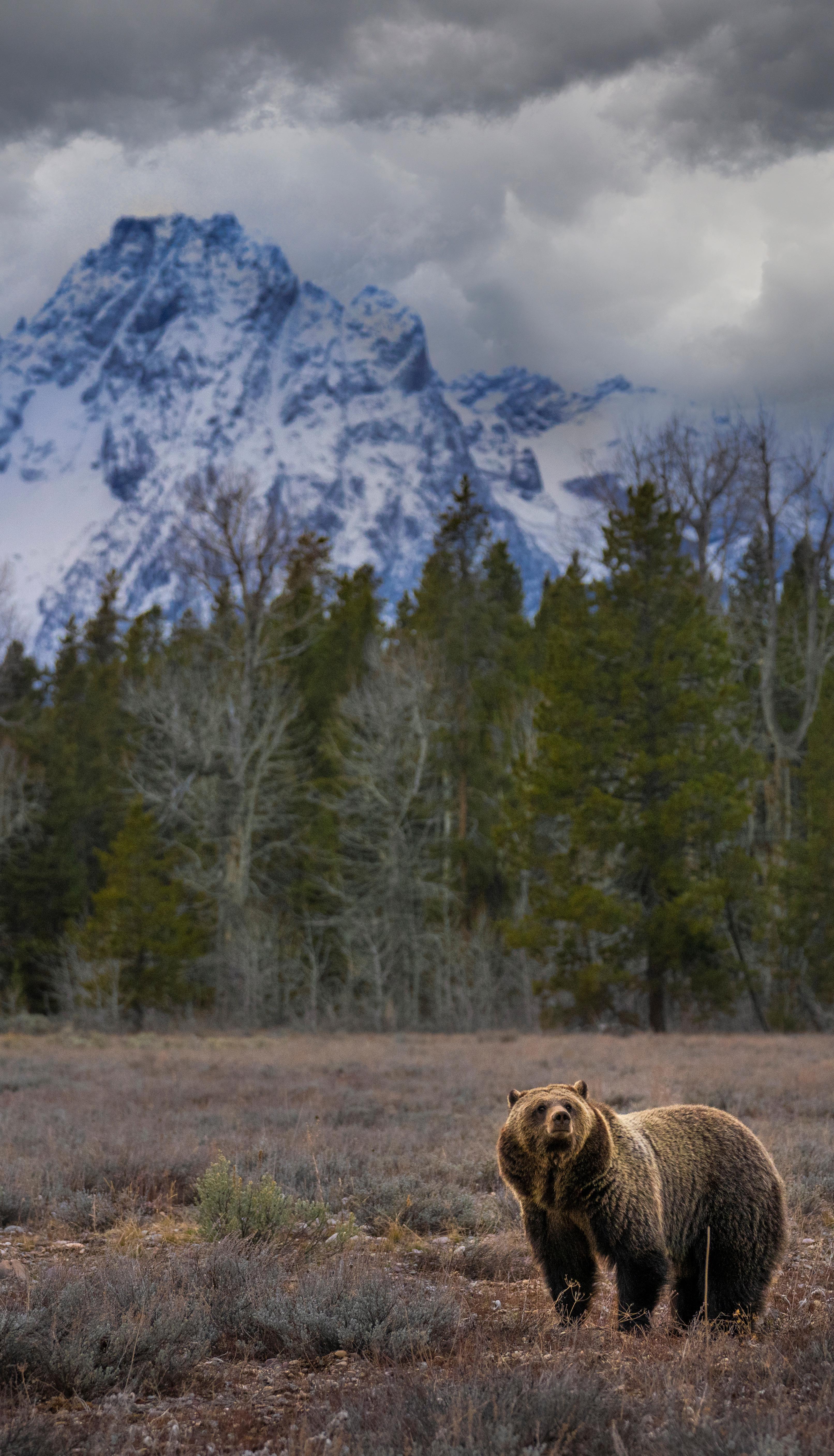

2023 ANNUAL REPORT
RECENT VICTORIES by the numbers
45 bear-resistant containers deployed
A fed bear is a dead bear, and these containers help keep bears wild and people safe throughout Greater Yellowstone.
1,600 acres forever protected from mining
By stopping the mining threat just north of Yellowstone National Park, this vital wildlife habitat will remain intact for grizzly bears, elk, and more.
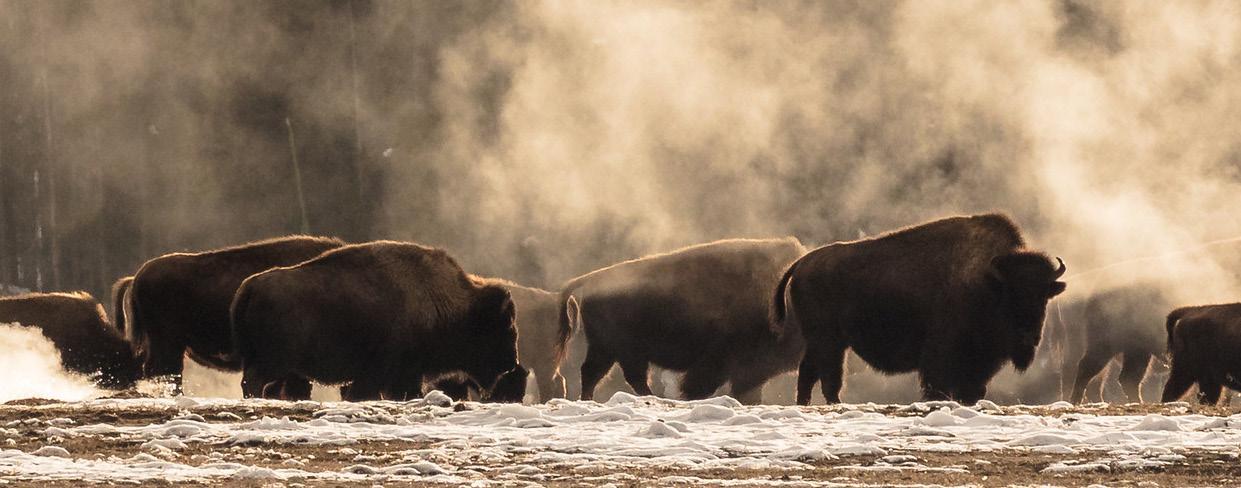
116 yellowstone bison diverted from slaughter
These bison were transferred to the Fort Peck Indian Reservation to finish quarantine before being rehomed to Tribal lands across the North America.
399 volunteer hours to make fences more wildlife friendly
Fences make it difficult for wildlife to move across the Greater Yellowstone Ecosystem and reach seasonal habitats. Fortunately, we’re able to make these barriers more permeable for many species, including elk, deer, and pronghorn.
10 buffalo welcomed home on the wind river indian reservation
After finishing quarantine at the Fork Peck Indian Reservation in northern Montana, these buffalo are helping grow the Eastern Shoshone herd and support the cultural and ecological restoration of buffalo on the Wind River Indian Reservation.
from scott
It’s been another history-making year for the Greater Yellowstone Coalition and the 22 million acres of spectacular, wild places we’re working to protect.
Thanks to an unprecedented show of support from around the world, we successfully stopped the last industrial mining threat on the northern boundary of Yellowstone National Park. It’s not every day that a small nonprofit like ours sets out to buy a gold mine, but that’s exactly what we did. Now, the rich wildlife habitat, pristine waters, and spectacular view on Crevice Mountain will be forever protected. What a win for Yellowstone!
Our work to restore wild bison to Tribal and other appropriate public lands has also made a big leap forward. In February, we celebrated the largest-ever transfer of bison from Yellowstone National Park to the Fort Peck Indian Reservation, where the animals will finish their final months of quarantine before being rehomed to Tribal nations across the county. GYC’s collaborative approach to bison conservation and commitment to raising the necessary funds to expand the Bison Conservation Transfer Program are paying big dividends.
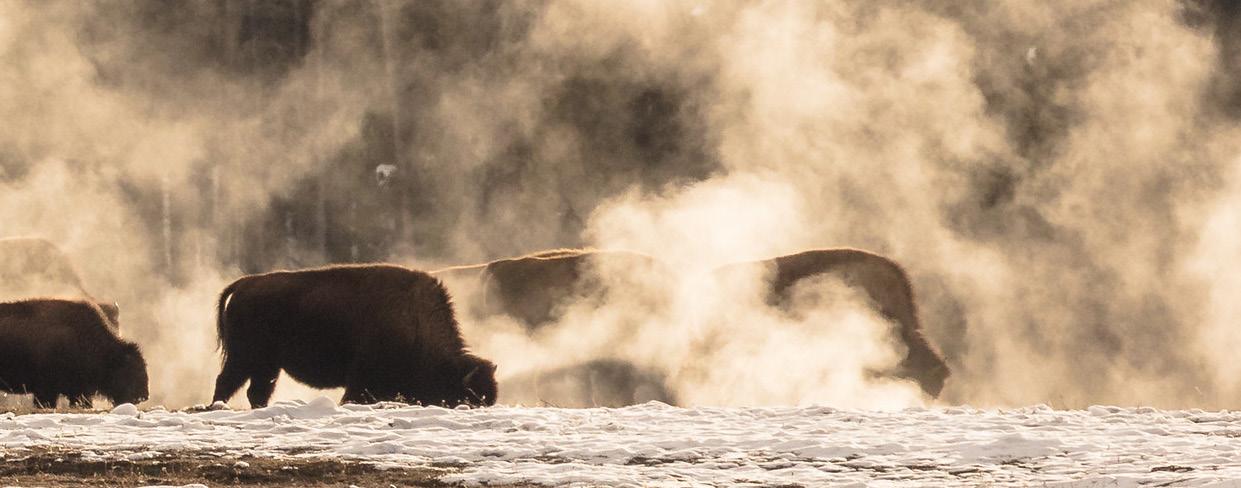
In the coming year, we expect decisions related to the future management of grizzly bears, opportunities to advance several critically important wildlife crossing projects in our region, and the launch of a community-based campaign to stop a proposed cyanide heap-leach gold mine near the headwaters of the mighty Snake River in Idaho. Your continued support of our work will make these, and other important efforts, a success.
Despite these successes and opportunities, the Greater Yellowstone Ecosystem continues to face challenges and new threats. Increasing land development and visitation, a changing climate that’s putting pressure on the iconic fish and wildlife that live here, and a divisive political climate makes it harder to accomplish bipartisan conservation solutions. Our work to develop and implement pragmatic solutions that benefit the lands, waters, and wildlife of Greater Yellowstone is far from over.
Thank you for being a steadfast champion of our work, we cannot do it without you.


Scott Christensen Executive Director

Legacy Campaign Halts Gold Mine Near
Yellowstone
Last year, we celebrated one of the greatest conservation victories in GYC history by stopping the proposed gold mine on Crevice Mountain, right on the very border of Yellowstone National Park. The generosity of supporters across the world allowed us to protect nearly 1,600 acres of vital wildlife habitat and the mighty Yellowstone River from the threat of an industrial gold mine.
After raising $6.25 million, GYC closed on the deal with Crevice Mining Group and took ownership of the company’s assets — effectively killing the mine before it could start. It’s been more
than six months since we achieved that goal, and now we’re taking the next steps to permanently preserve this remarkable landscape just north of Yellowstone.
In mid-April, GYC relinquished 56 unpatented mining claims covering 1,200 acres of public land to the Bureau of Land Management (BLM). An unpatented mining claim is a legal claim to federal land for which the holder has asserted the right of possession and the right to develop and extract a mineral deposit. GYC acquired these 56 claims from Crevice Mining Group as a part of the gold mine purchase last year. The
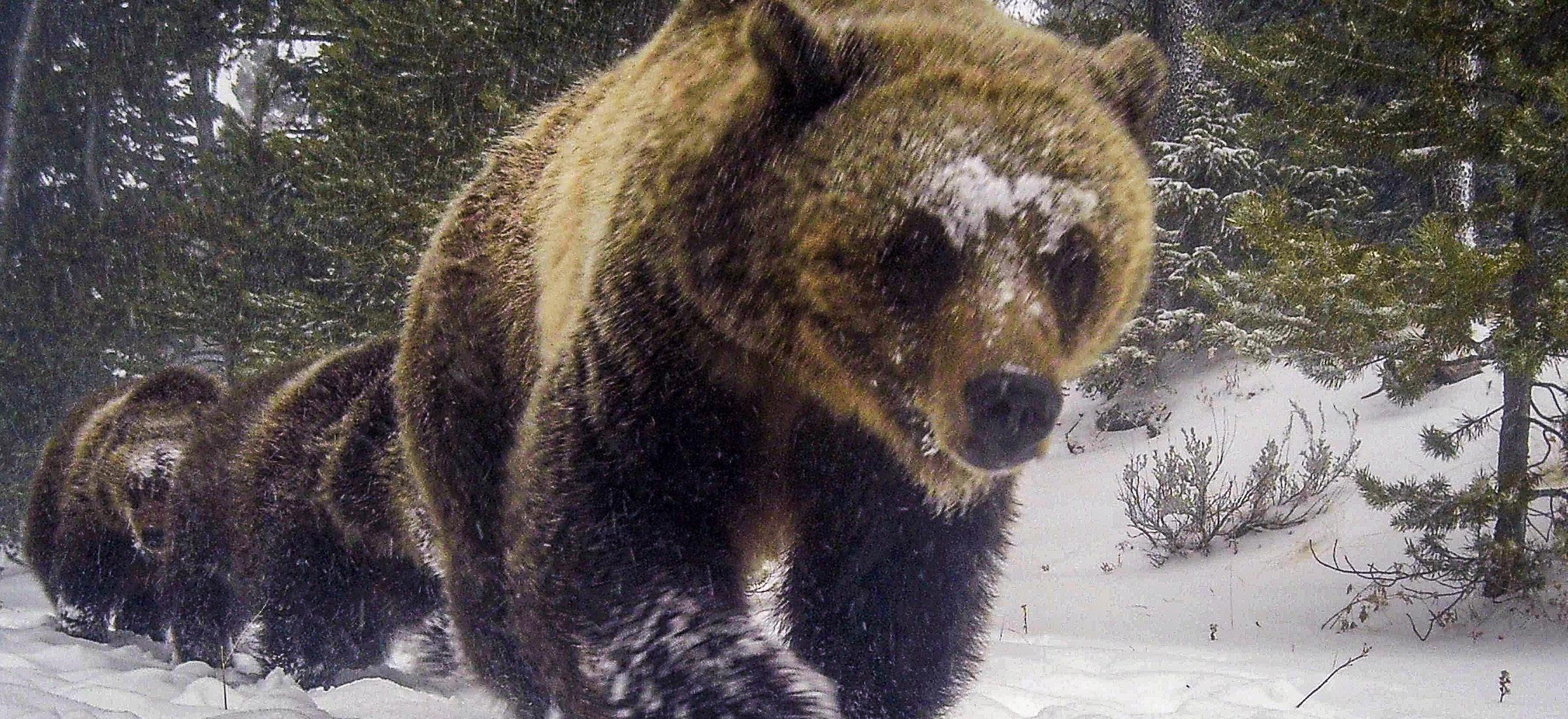
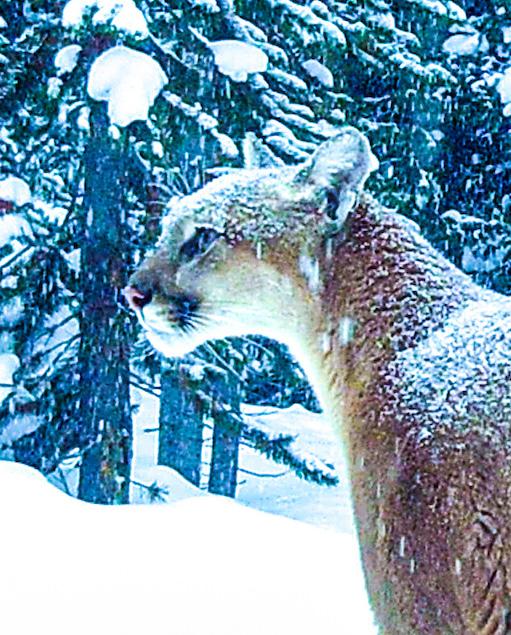


BLM has since extinguished the claims, which allowed for the 1,200 acres to become permanently protected under the mineral withdrawal enacted by the Yellowstone Gateway Protection Act.
The Act, which GYC played a lead role in passing in 2019, permanently bans mining and new mining claims on more than 30,000 acres of the Custer Gallatin National Forest north of the park where Crevice Mountain is located. We are thrilled to see these spectacular lands overlooking Yellowstone National Park finally receive the protection they deserve. The era of mining threats along Yellowstone’s northern boundary

is over. Thanks to you and tremendous support from businesses and residents in the Paradise Valley, we have once again demonstrated that Yellowstone is more valuable than gold. In the coming months and years, GYC will continue working through the process of transferring the assets we own on Crevice Mountain to the federal government, where they will be open to the public and forever protected from mining.
Without your steadfast support, none of this would be possible. Thank you for helping us achieve this monumental victory for Yellowstone!

Aerial view of Crevice Mountain © William Campbell

Bridging the Gap for Wildlife Habitat Connectivity
With road safety, wildlife conservation, and the cost to communities on the line, wildlife highway crossings have become a key strategy in protecting wildlife and people in Greater Yellowstone. This approach often seems like a no-brainer, but building new crossings is expensive and can take years to complete.
Fortunately, the Bipartisan Infrastructure Law set aside $350 million in federal aid to support wildlife crossings, creating a significant new opportunity for state transportation departments, Tribes, and conservation groups to secure the necessary funding to build wildlife overpasses and underpasses along Greater Yellowstone’s iconic migration corridors. In Wyoming, spectacular wildlife migrations create opportunities to watch thousands of elk, pronghorn, and mule deer move from highelevation summer ranges in the national parks to more mild, low-elevation
winter ranges across the region. Often called the “engine of the ecosystem,” these migrations support an intricate ecology of predator and prey relationships, sustain local economies, and are culturally significant to Native American communities.
Late last year, the Wyoming Department of Transportation (WYDOT) cut the final ribbon on its U.S. Highway 189 project dubbed Dry Piney, one of its priority projects to support wildlife conservation and public safety. The 19-mile section of highway between the towns of Big Piney and La Barge has long been a hotspot for wildlife-vehicle collisions. Now, thanks to nine underpasses and 33 miles of fencing, many wildlife species are already using the new infrastructure to cross the road safely. The Greater Yellowstone Coalition helped to raise the $17 million needed to complete the project. This included supporting


WYDOT in securing a $14.5 million BUILD grant from the Federal Highway Administration and an additional $400,000 in grant funding through the Knobloch Family Foundation, The Volgenau Foundation, and National Fish and Wildlife Foundation. Additionally, the Wyoming Wildlife and Natural Resources Trust created a match funding opportunity with nonprofit partners, contributing $349,000, and WYDOT and the Wyoming Game and Fish Commission each donated $1.25 million to the project.
With the completion of the Dry Piney Project, attention has now turned to a critically important effort to protect wildlife migration between Grand Teton National Park and the Wind River Indian Reservation. This $28 million project on U.S. Highway 26 will construct three new wildlife underpasses and one overpass, plus retrofit several bridge abutments,
cattle crossings, and culverts on a dangerous stretch of highway between Dubois and Crowheart, Wyoming. To support this project, WYDOT has teamed up with the Wyoming Game and Fish Department and the Eastern Shoshone and Northern Arapaho Tribes to seek federal funding, while GYC and our partners at The WYldlife Fund will be raising the necessary private match dollars.
This exciting new project and partnership will safeguard herds of mule deer as well as elk, moose, pronghorn, white-tailed deer, and bighorn sheep that have for millennia migrated from the shadow of the Tetons to the spectacular Wind River country. Collaborative projects like Dry Piney and U.S. Highway 26 are one of the best conservation tools in our toolbox to protect robust wildlife populations and support local communities.
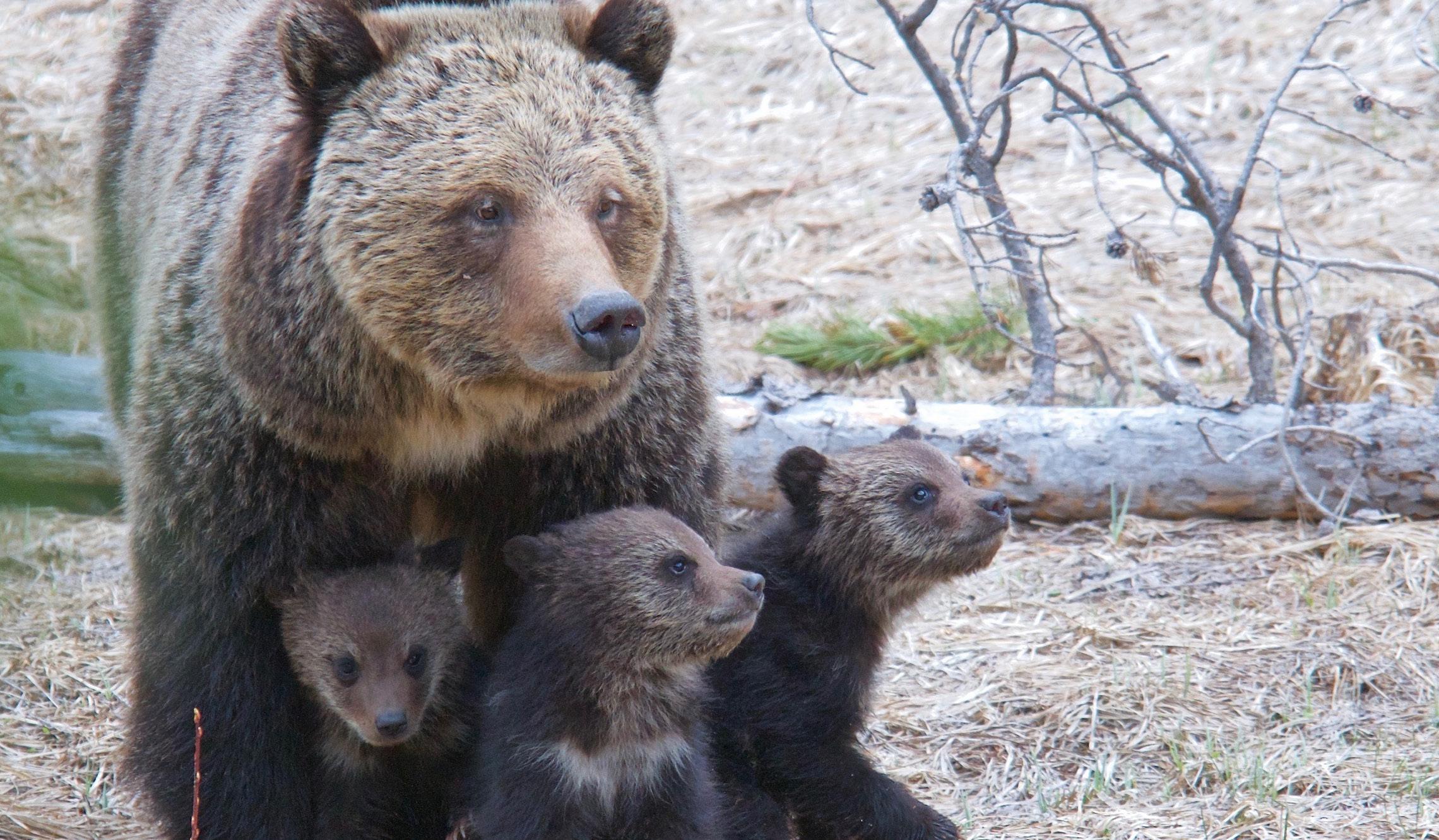
Securing the Future for Grizzlies
As a keystone species, grizzly bears play a vital role in the health of the Greater Yellowstone Ecosystem. Here at GYC, it’s our job to ensure grizzlies can thrive by keeping bears wild, people safe, and livelihoods intact.
In 2023, GYC led and supported a variety of projects that focused on improving grizzly bear habitat and preventing conflicts with people. Thanks to supporters like you, we:
Partnered with the Custer Gallatin National Forest to begin a large-scale grizzly bear habitat restoration effort.
Enacted bear conflict-prevention measures in Gardiner, Montana, including an electric fencing program, an effective garbage storage program, and an education and outreach plan.
Purchased bear-resistant trash bins and dumpsters in Bozeman, Montana, Paradise Valley, Montana, and Fort
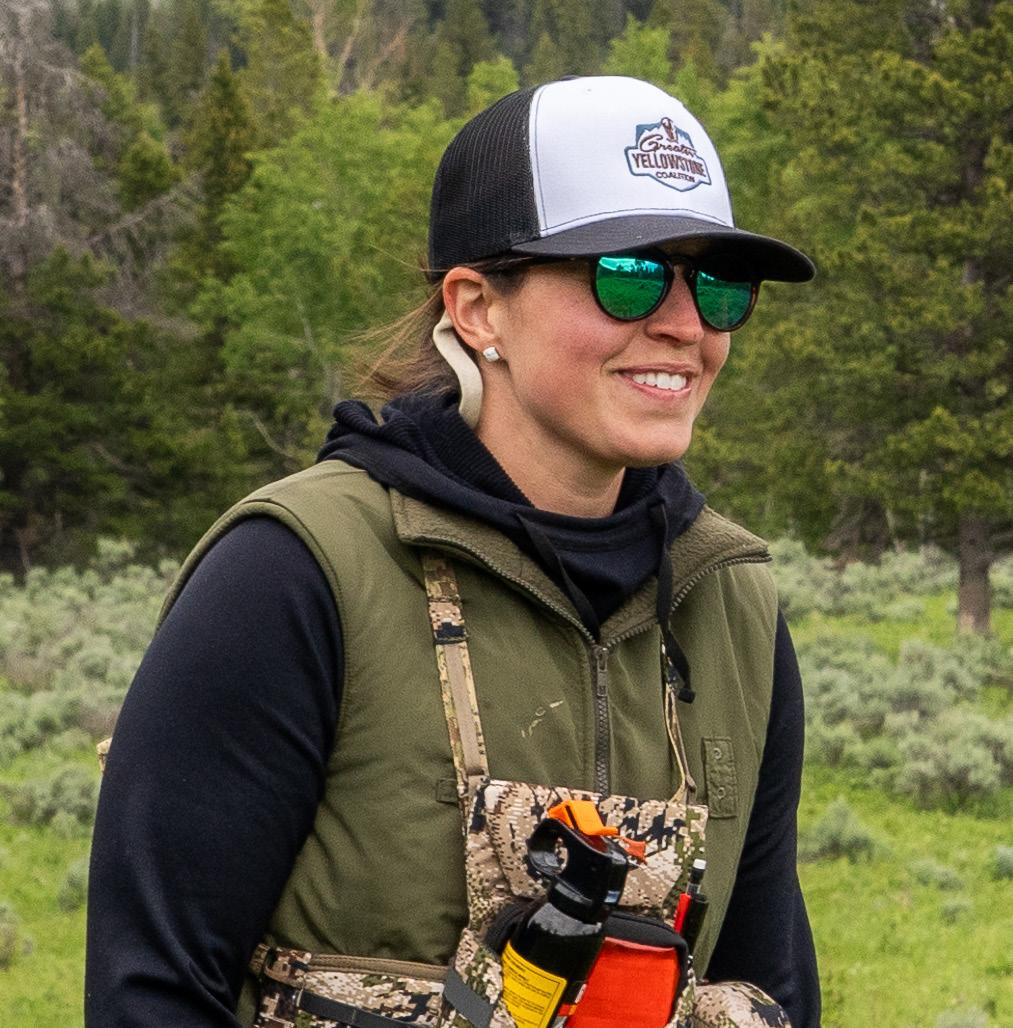
Washakie, Wyoming.
This year provides more exciting opportunities to protect grizzly bears. In April 2024, GYC purchased and delivered 39 bear-resistant containers to the Beaverhead-Deerlodge National Forest. “Bear-resistant containers are an easy, accessible, and responsible tool we can all use to help keep bears alive and ourselves safe,” said Erin Steva, GYC’s Montana Conservation Associate.
Our efforts this year will also include supporting coexistence programs with ranchers throughout the ecosystem, providing more opportunities to secure bear attractants for residents and visitors alike, and advocating for grizzly bear management policies grounded in the best available science.
Thank you for being a champion for grizzly bears!
Meet Montana Conservation Associate Erin Steva Erin supports grizzly bear coexistence work throughout southwest Montana, along with her work conserving key public lands and improving habitat connectivity.
Creating Climate Resiliency
Rivers are the lifeblood of the Greater Yellowstone Ecosystem. The cold, clean water that originates high in our mountains is the start of rivers like the Yellowstone and Snake, renowned for wildlife, world-class recreation, and supplying millions of us downstream with clean drinking water.
But the ecosystem’s rivers and streams are changing. As the impacts of climate change unfurl across the region, Greater Yellowstone’s waters are under threat. Warmer winters, hotter summers, earlier runoff, and changes in precipitation are among the challenges we experience.
Fortunately, GYC is investing in river restoration projects to keep our rivers clean, cold, and flowing, which in-turn supports fish and wildlife, our favorite river activities, and all the communities downstream. River restoration projects take many forms but are rooted in returning a stream to a more natural state and increasing its ability to persist in the face of climate change. Thanks to generous supporters like you, three restoration projects are in the works in Wyoming.
The goal of the Crow Creek Project on the Wind River Indian Reservation is to restore degraded habitat to support wildlife like beaver and buffalo, native plants, and cultural connections for Eastern Shoshone and Northern Arapaho Tribal members.
The Crowheart Warm Springs Project, also on the reservation, will restore a section of river and riverside habitat to support one of a few remaining populations of trumpeter swans in Wyoming, and re-plant Tribally important native plant species.
On Crandall Creek outside of Cody, Wyoming, the focus is protecting native Yellowstone cutthroat trout.
In April, GYC and Wyoming Game & Fish began a research project to determine next steps to keep these fish genetically pure and protected from impacts of non-native trout and climate change.
Over the next year, we expect to see these projects move through the planning phase and into implementation. Thank you for helping us protect these wild rivers.

Crow Creek on the Wind River Indian Reservation © GYC/Sierra Harris
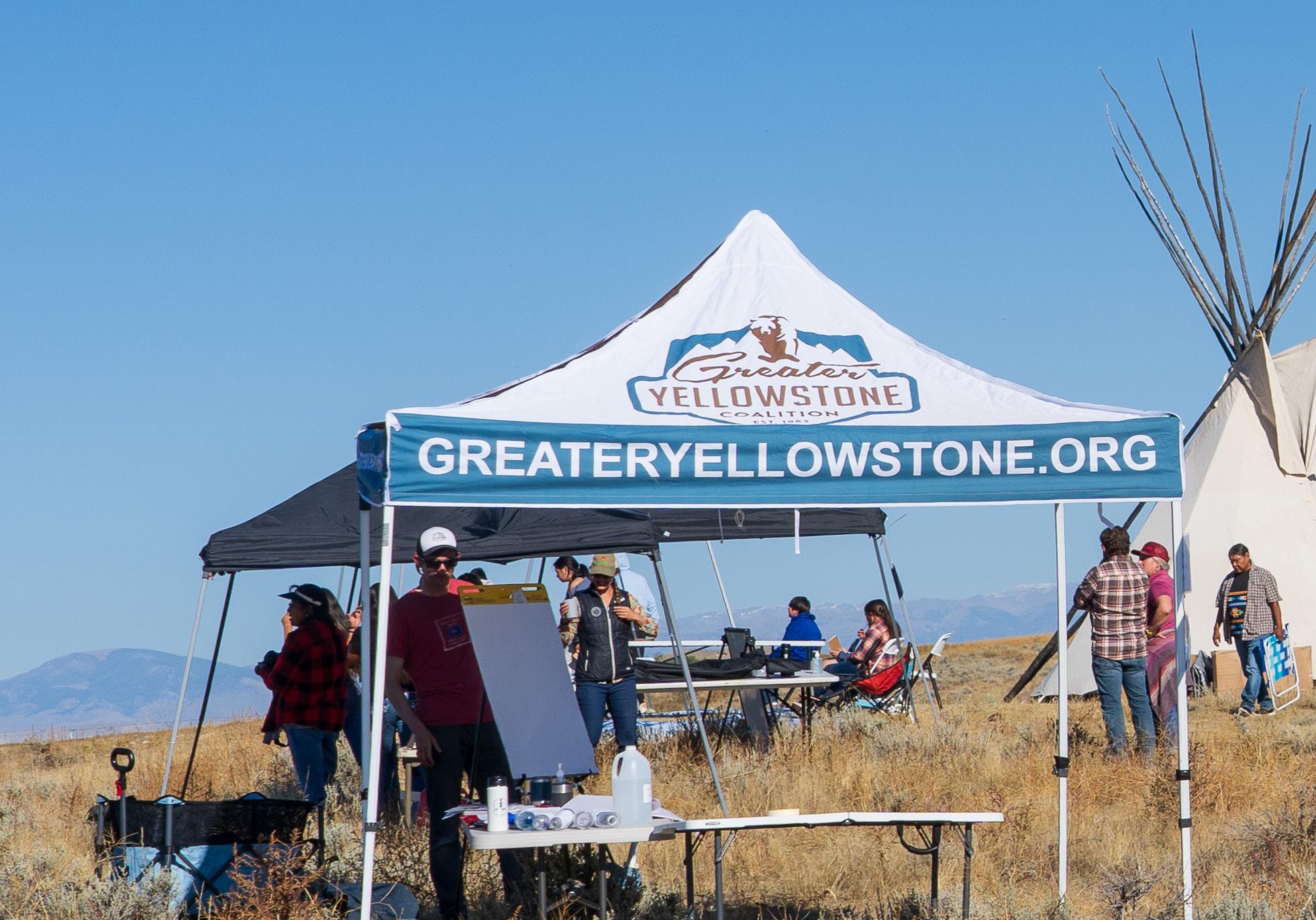
Supporting Community and Connection on the Wind River Indian Reservation
On the Wind River Indian Reservation in Wyoming, the beauty of wild rivers, open space, and iconic wildlife is abundant. The Eastern Shoshone and Northern Arapaho Tribes call this land home, and have lived in reciprocity with the plants, animals, waters, and lands since time immemorial.
But for nearly two centuries, Tribes across America have endured federal policies of displacement, extermination, and assimilation, and the removal of cultural practices and
endless roadblocks that stand in the way of cultural revitalization. Through community outreach and events, GYC staff (who are themselves Tribal members) on the Wind River Indian Reservation are working to strengthen Tribal members’ connections to culture, land, water, and wildlife.
In 2023, GYC hosted a series of community meetings in four reservation communities. Over a shared meal of buffalo spaghetti,

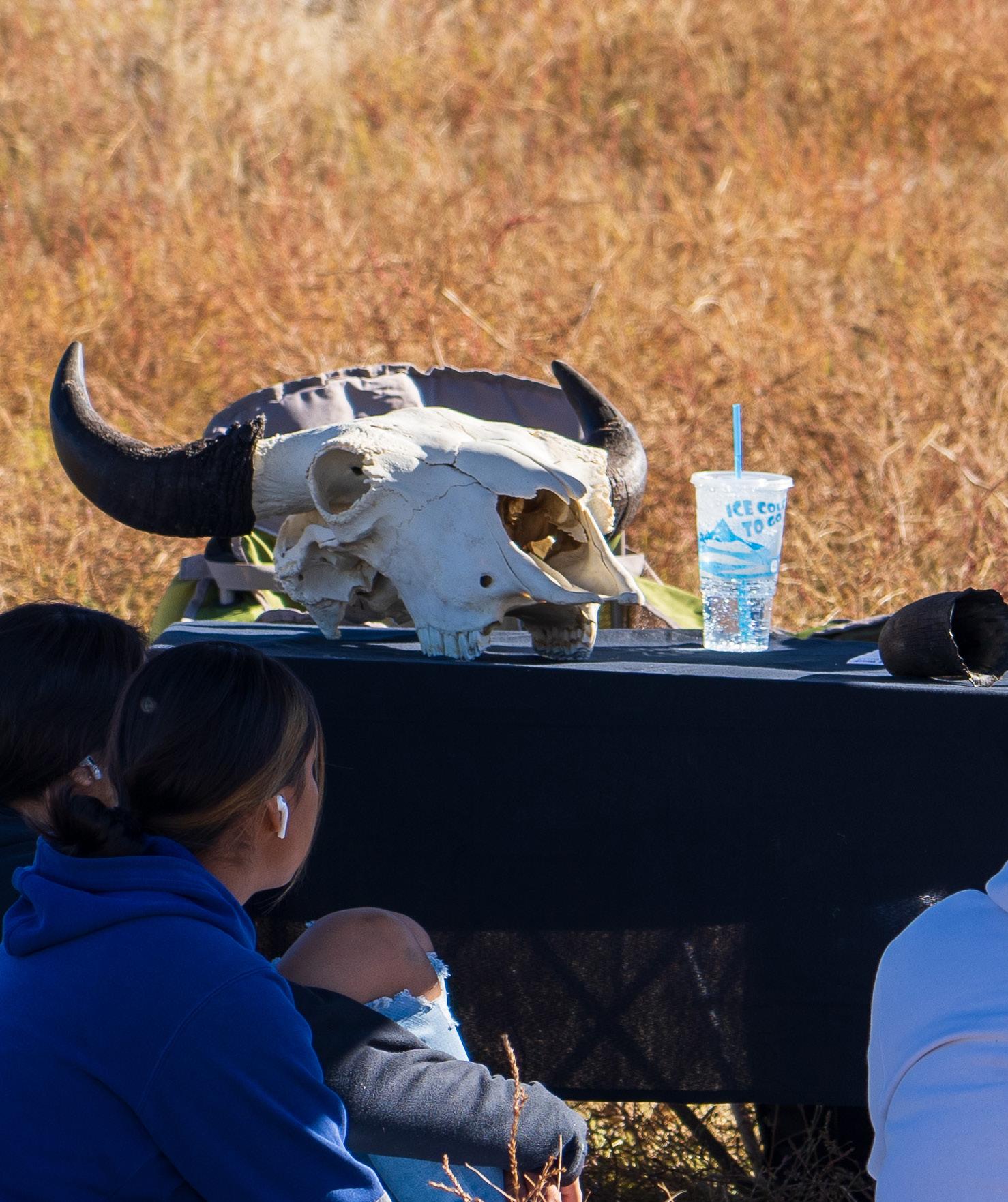

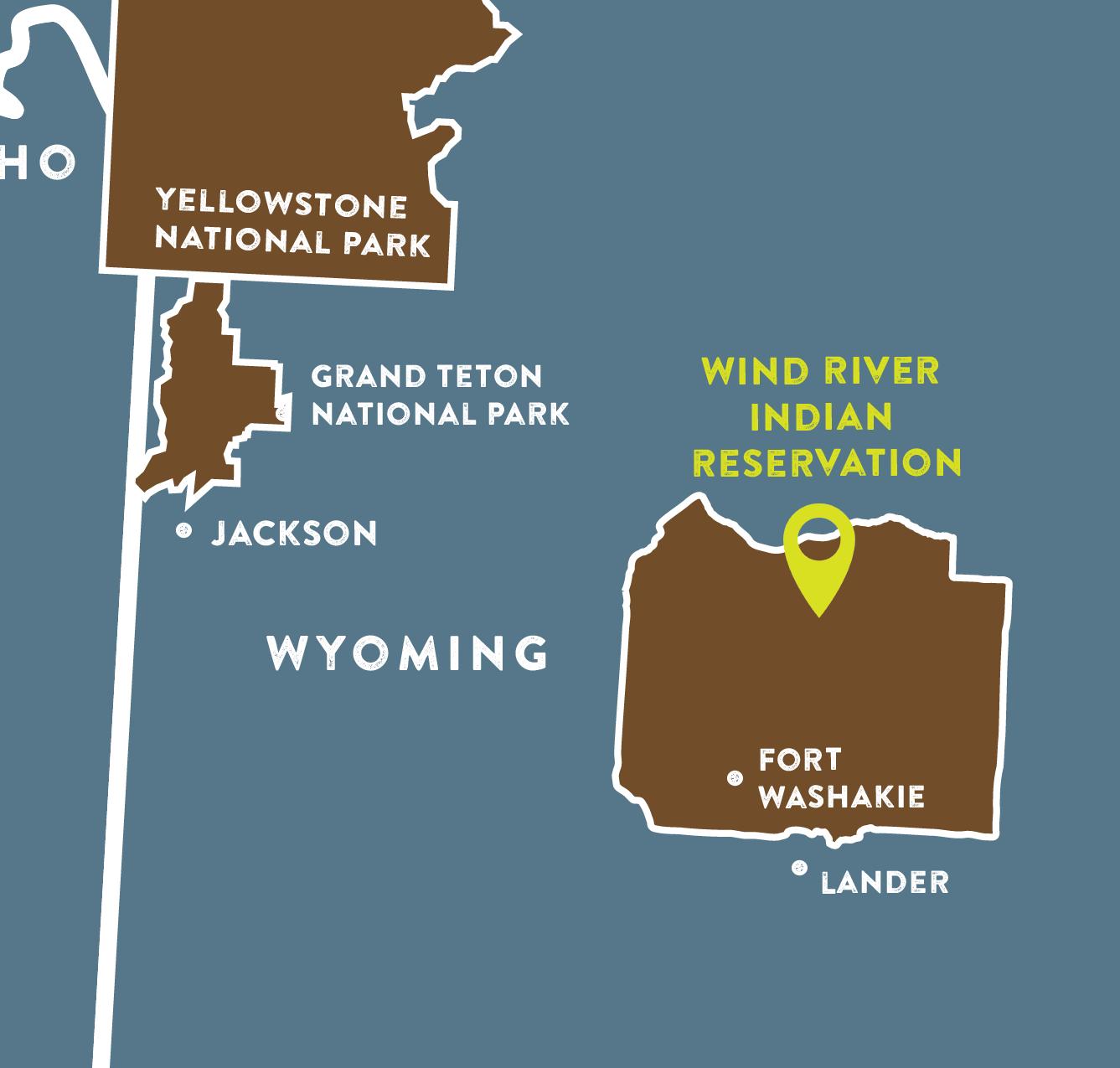
the meetings featured the film Tribal Waters, and discussions about Wind River resources, sovereignty, and governance, as well as the Greater Yellowstone Climate Assessment. We look forward to hosting more community events in 2024.
GYC also co-hosted the Indigenous Youth Culture and Climate Camp, a land-based education event on the reservation. More than 100 students spent three days outdoors learning about buffalo, their lands, and their

water. We are excited to host this event again in June 2024 with a new group of students. Tribal outreach led by Tribal members on the reservation is reconnecting youth and elders, sharing insights about the Wind River, and learning about and practicing reciprocity with nature.
Support from generous donors like you is supporting community, and connection to the culture, plants, animals, and water of the Wind River Indian Reservation. Thank you.
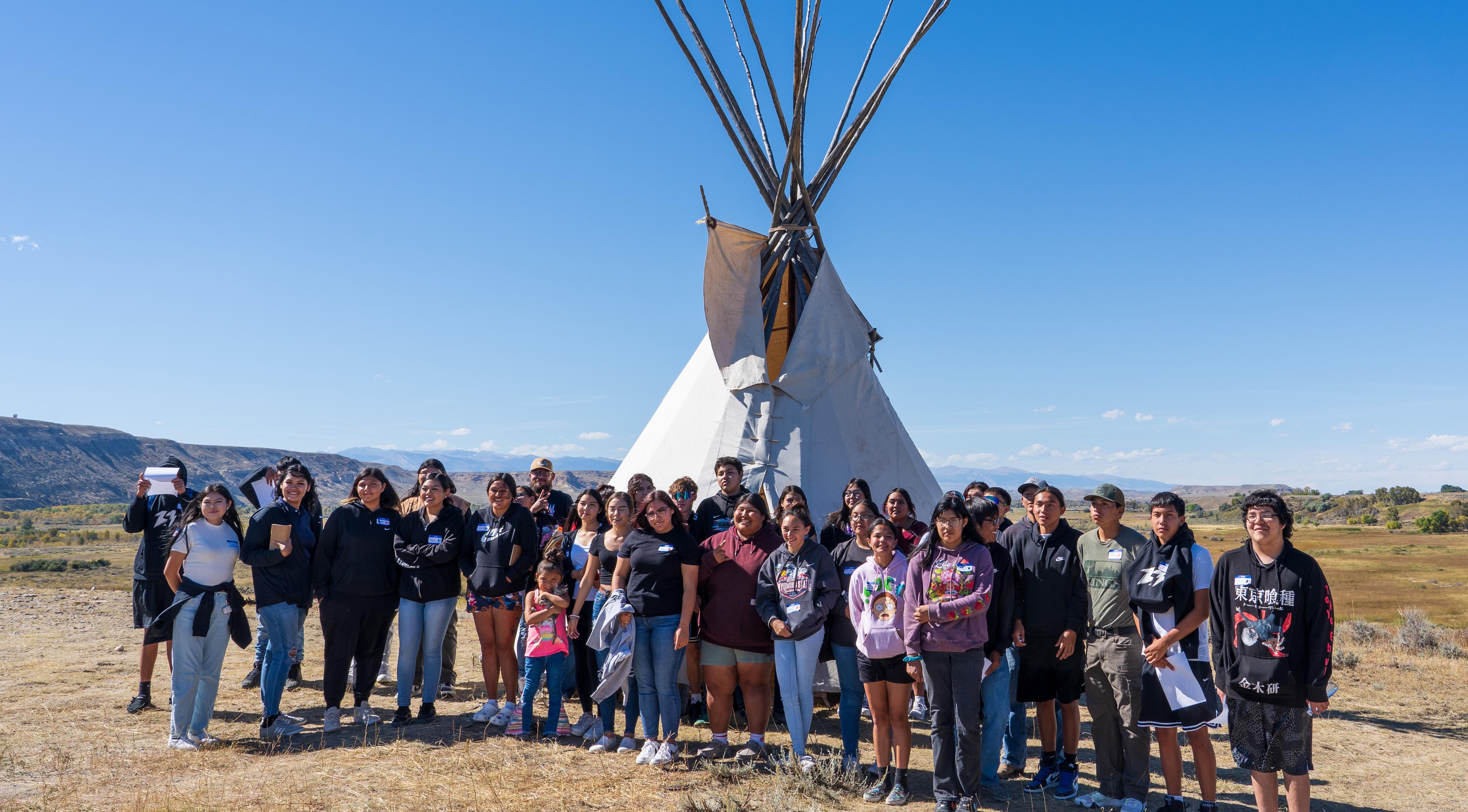
Restoring Yellowstone Bison
The restoration of America’s national mammal continues to reach milestones, each more impactful than the last. As Yellowstone National Park is in the final months of creating a new, more modern plan for managing bison, we’ve been supporting the goal of keeping more bison alive, transferring more of these genetically important animals to Tribal nations, and championing durable policies that protect bison long into the future.
In early February, Yellowstone relocated the largest number of live bison to American Indian Tribes to date. On a foggy Montana morning, 116 healthy bison were loaded onto secure trucks and moved from the park nearly 500 miles north to the Fork Peck Indian Reservation where they will complete their final year of quarantine before being transferred to Tribes across North America. Since the Yellowstone Bison Conservation Transfer Program launched in 2018, 414 bison have been
saved from slaughter and rehomed with 26 Tribes in a dozen states.
In 2021, the Greater Yellowstone Coalition raised $250,000 to contribute to expanding Yellowstone’s transfer program. Alongside a $500,000 commitment from the park and $250,000 raised by our partners at Yellowstone Forever, facility upgrades have more than doubled the capacity of this critical program. Plus, this winter the federal Animal & Plant Health Inspection Service and the state of Montana agreed to shorten the duration of time it takes for bull bison to complete the first two phases of quarantine, from 1.5 years to now just 300 days.
Combined, these two measures will mean even more healthy bison will survive and fulfill the myriad cultural, spiritual, and nutritional needs of Native Americans who for millennia have built their lives around buffalo.

ways to support
If you’re interested in learning about all the ways you can make a difference for Greater Yellowstone, here are some opportunities to make more of an impact with the Greater Yellowstone Coalition
Donor-Advised Funds
Give to Greater Yellowstone with the power of a private foundation! A donor-advised fund (DAF) is a charitable investment account that makes giving simple both now and in the future. By setting up a donor-advised fund and naming organizations like GYC as beneficiaries, you ensure that the remainer of your funds will be giving to the charities of your choice for decades to come.
Planned and Estate Giving
Set up a legacy of giving to Greater Yellowstone! Making a planned gift to GYC in your will, estate, or living trust is an enduring way to impact the lands, waters, and wildlife found in this special ecosystem. You’ll be forever remembered as a champion for Greater Yellowstone.
Stock and Wired Giving
Invest in the future of Greater Yellowstone! Your gift of appreciated securities—publicly traded stocks, bonds, and mutual fund shares— to GYC helps us continue our crucial work. By donating your appreciated securities, you may be able to avoid capital gains tax, diversify your portfolio, and/or secure a stream of income.
Workplace Giving
Conservation is good for business! Does your company offer donation matches to nonprofit organizations? It guarantees DOUBLE the funds to see our conservation campaigns through to success. If you’re a business owner, you can also play an integral role in raising awareness and contributing funds to our efforts.
Interested in learning more? Reach out to Director of Development Melissa Richey at 406-556-2834 or mrichey@greateryellowstone.org.

financials
Our financial sustainability is due to generous gifts, bequests, sustaining donations, events, and restricted funding for key campaigns and projects within the ecosystem. This generosity allows us to think bigger, and make lasting investments in our work now, and in the future.
If you’d like additional information, please see our audited financial statements and 990s on our website at greateryellowstone.org/financials.


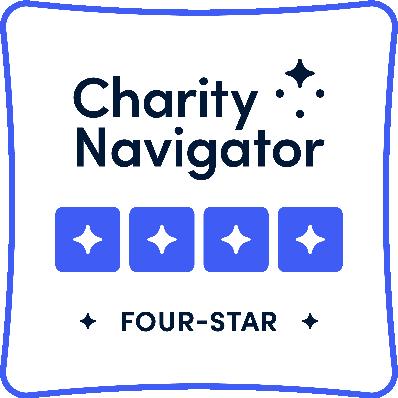

Attaining a 4-star “exceptional” rating from Charity Navigator verifies the Greater Yellowstone Coalition exceeds non-profit industry standards. Only 16 percent of charities evaluated have received at least seven consecutive 4-star ratings in a row, which means the Greater Yellowstone Coalition outperforms most other charities in America.
The Greater Yellowstone Coalition holds a platinum transparency rating with Candid and Guidestar, the world’s largest source of information on nonprofit organizations. The platinum transparency is the highest level a charity can achieve, showing GYC is committed to sound financial management.
Board of Directors
The Greater Yellowstone Coalition’s Board of Directors is comprised of dedicated volunteers who bring leadership, expertise, and enthusiasm to protecting the Greater Yellowstone Ecosystem.
Dan Wenk, Chair
Nancy Watters, Vice Chair
Michael Gadsden, Treasurer
Jane Spencer, Secretary
Hannibal Anderson
Abi Devan
Kitty Griswold
Craig Groves
Thomas Jalkut
Chris Johns
Rick Johnson
Bill Moliski
Andrew Moore
Diana Simmons
Jim Spencer
Georgie Stanley
Dan Vermillion
Ted Turner, Emeritus
The National Council brings together a core group of supporters who help advance the mission of the Greater Yellowstone Coalition and provide leadership as the organization strengthens its programs and initiatives. National Council
Beth Burrough
Swep Davis
Peggy and James Graeter
John Heminway
Ned Jannotta
Beedee Ladd
Lichtendahl
Sandy Martin
Cindy McCollum
Chris Naumann
Ginna Naylor
Janet Offensend
Ed Orazem
Charlie O’Reilly
Jim Potter
Dan Sarles
Stephen Sayre
Kuni Schmertzler
Anu Sharma
Kathy Sinclaire
Greater Yellowstone Coalition Staff
John Spellman
David Spencer
Robert Steinwurtzel
Geoff Stephens
Lisa Volgenau
Jennifer Wilson
Tom Winston
Our staff is passionate, collaborative, and innovative—and that’s why we succeed.
Blakeley Adkins, The Volgenau Foundation
Wildlife Conservation Associate
Jared Baecker, WY Conservation Manager
Craig Benjamin, Director of Conservation
Lindsey Benov, Sr. Development Associate
London Bernier, Communications Associate
Hali Camper, Development Organizer
Scott Christensen, Executive Director
Teddy Collins, Western WY Conservation Assoc.
Matt Cuzzocreo, Sr. Wildlife Conservation Assoc.
Charles Drimal, Deputy Director of Conservation
Shana Drimal, Sr. Wildlife Conservation Assoc.
Colleen Friday, Wind River Conserv. Organizer
Tom Hallberg, ID Conservation Organizer
Sierra Harris, Climate Resiliency Program Manager
Jeana Henley, Senior Finance Associate
Kurt Imhoff, Sr. Climate Conservation Associate
Signa McAdams, Wind River Conserv. Organizer
Allison Michalski, Sr. ID Conservation Associate
Darby Pieroni, HR and Operations Manager
Emmy Reed, Sr. Digital Communications Assoc.
Melissa Richey, Director of Development
Kathy Rinaldi, Deputy Director of Conservation
Emilie Ritter, Director of Comms and Marketing
Tiffany Sandholm, Foundations and Grants Manager
Sally Schrank, Montana Conserv. Manager
Brooke Shifrin, Wildlife Program Manager
Veronika Sieben, Individual Giving Manager
Erin Steva, Montana Conservation Associate
Tim Tripp, Director of Finance
Carol Walden, Sr. Operations Associate
Erin Welty, Sr. WY Conservation Assoc.
Ken
Wes Martel, Sr. Wind River Conservation Assoc.
